October 24, 2012 - Fall Shorebirds
After spending most of the spring in the woods photographing songbirds, I put my camera away for much of the summer to catch up on photo processing and work on some web design projects, but I did fit in a few days of shorebird photography on the beaches and mudlfats of the Delmarva Peninsula. Along with shorebirds, I got a few photos of the local waders, gulls, and terns. Nothing I haven't done before, but after chasing new species much of the spring, it was nice to settle down and focus on improving on species I'd already photographed.
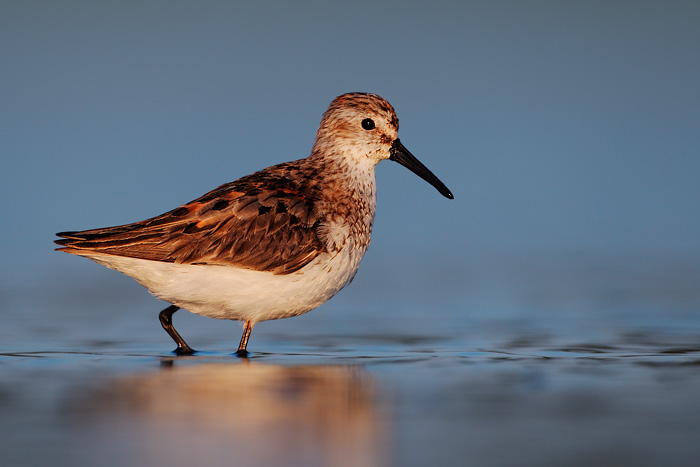
Western Sandpipers breed almost exclusively in Alaska and eastern Siberia, yet a significant wintering population exists on the Eastern Seaboard. These birds arrive from Alaska after a diagonal flight across interior North America. The individual pictured here is molting from breeding to winter plumage, as can be seen from the dull brown non-breeding scapulars interspersed with the remaining bright rufous scapulars.
October 16, 2012 - Eastern Boreal Forests
Photos from my June road trip through the boreal forests of New York and Quebec are now online. During my two weeks in the forest I was able to track down almost all the birds I'd hoped for, most notably the five species of eastern warblers that I hadn't yet photographed seriously: Palm, Cape May, Bay-breasted, Tennessee, and Connecticut Warblers.
Leaving Virginia on the morning of the second, I knocked out the longest stretch of the drive in one push, arriving in the Adirondack Mountains of Northern New York in early evening. With a few hours to use before sunset, I headed out into the spruce bogs in search of my first target species, Palm Warbler. It didn't take long to find several singing males, and in no time I was getting some solid images. Unfortunately, while I was finding the birds, every mosquito in the bog was finding me, and I had neglected to bring any repellent. It made for something of a rough start to the trip. On the one hand, it was thrilling to watch and photograph as a beautiful bright male Palm Warbler was hopping along a mossy branch catching spiders right before my eyes; on the other hand, it was agonizing to do this while refraining from swatting mosquitoes. I must have had 50 of the blood suckers on my face and hands simultaneously, while I gritted my teeth and tried to focus on nothing but composing images and clicking the shutter during those ephemeral moments when the bird struck a good pose. Leaving the bog at sunset, I made a beeline for the nearest gas station to stock up on insect repellant, which made the rest of the trip much more bearable.
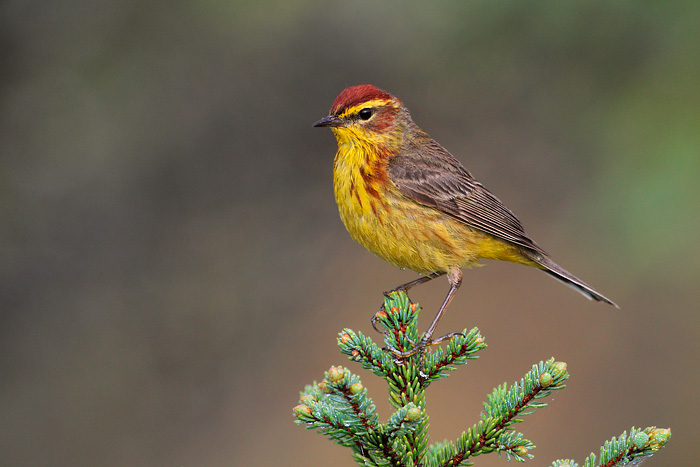
The eastern form of Palm Warbler, also known as Yellow Palm Warbler, is more uniformly washed with yellow on the underparts than is the western form. During the breeding season, Palm Warblers are typically found in spruce bogs.
I ventured back into the bogs early the next morning for a few more hours of Palm Warbler photography, then left the bogs and drove high up to the top of Whiteface Mountain in search of that rarest of North American thrushes, the Bicknell's Thrush. I found a few singing birds, but got only one usable photo. Still, I was happy, since I'd considered this species a longshot. Leaving the Adirondacks in late morning, I headed north across the border and off to explore the vast forests of Quebec. Steady rain throughout the afternoon confined my camera to the car, while I did some exploring and scouting for birds. The rain passed during the night, and the next few days were beautiful. I spent them traveling throughout the Laurentian Mountains of southern Quebec tracking down some of my favorite songbirds, like Blackpoll Warbler, Philadelphia Vireo, and White-winged Crossbill.
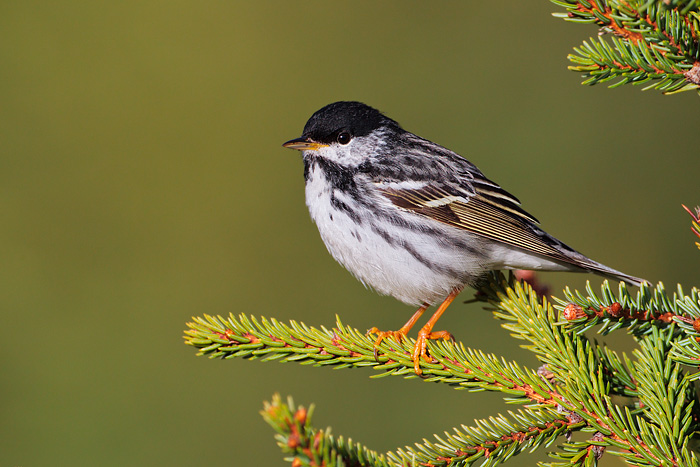
Blackpoll Warblers have one of the largest breeding ranges among North American wood warblers, ranging across the boreal forest from Maine all the way to Alaska. They also have the longest migration route of any wood warbler, and one of the highest-pitched songs of any bird. I have found them to be ubiquitous in good habitat in the New York mountains, Quebec, and Alaska.
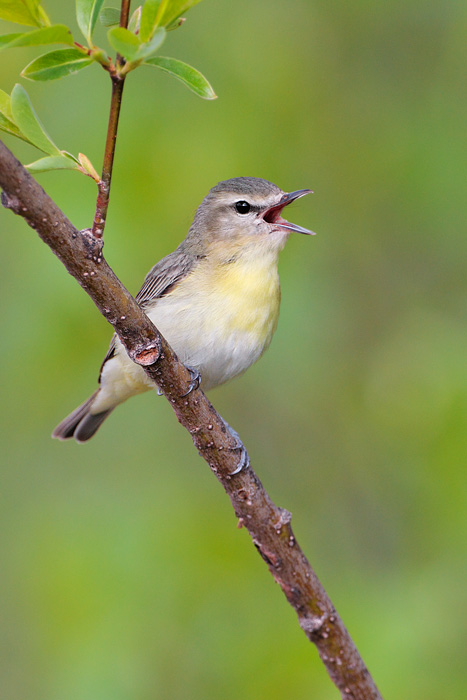
A poor view of a Philadelphia Vireo in the treetops during migration invites confusion with Warbling Vireo, but with a good view the two species are distinctive, with the yellow-washed underparts and more strongly patterned face of Philadelphia Vireo serving to distinguish it. The two species also have markedly different songs, with Warbling Vireo's being unique among North American vireos, while the song of the Philadelphia Vireo is more of the 'typical vireo' song class shared with Red-eyed, Yellow-throated, and the Solitary Vireo complex.
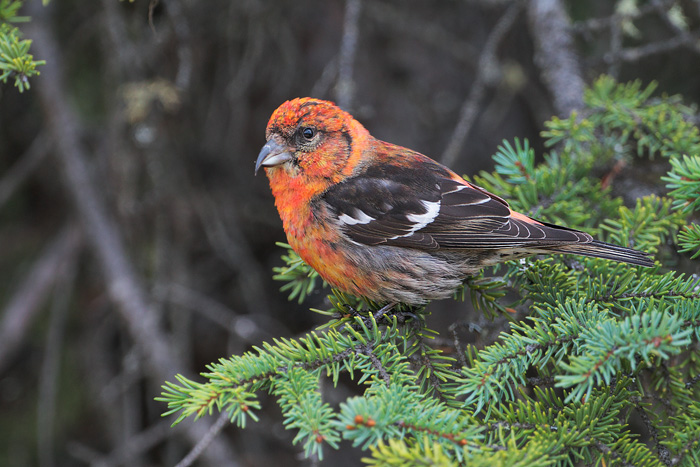
A conifer seed specialist, the nomadic White-winged Crossbill travels throughout the boreal forest of Canada and the northern United States in search of good cone crops. Many birders first encountered this species in the invasion year of 2009, when poor cone crops in the boreal forests prompted White-winged Crossbills to roam across much of the eastern United States in search of food. Crossbills are often found in small flocks, but in areas with good cone crops large numbers may band together. This bird was a member of a flock of over 500 White-winged Crossbills.
After a few days in the mountains, I headed down to Quebec City, where I met up with my girlfriend for a few days of exploring that beautiful and historic city. Then it was back into the woods, where I traveled farther north to the Lac Saint-Jean area, which hosts the easternmost population of Connecticut Warblers. Like many warblers, the Connecticut is grossly mis-named; it is a rare migrant in Connecticut, with most birds breeding far to the west. Like Bicknell's Thrush, I considered Connecticut Warbler a longshot, so I was happy to get a usable (though not great) photo. That is a species I intend to pursue more seriously in the heart of their range in future years. Heading still further north, I tracked down my remaining target warblers, the Cape May, Tennessee, and Bay-breasted Warblers. The forests of central Quebec are rife with warblers, and I look forward to visiting this area again as soon as I can banish my memories of the 20 hour drive it took to get there. Unfortunately, I could only stay a few days before it was time to start heading back south.
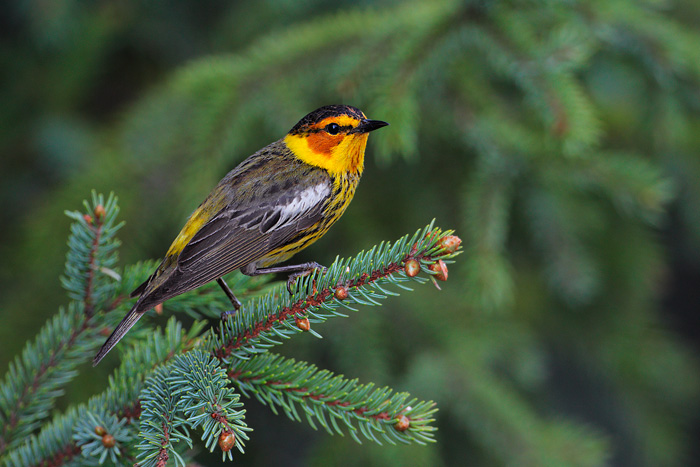
The beautiful Cape May Warbler proved difficult to track down on my trip. I found only a handful of individuals, all north of Lac Saint-Jean. As a spruce budworm specialist, Cape May Warbler populations move and fluctuate in response to budworm outbreaks.
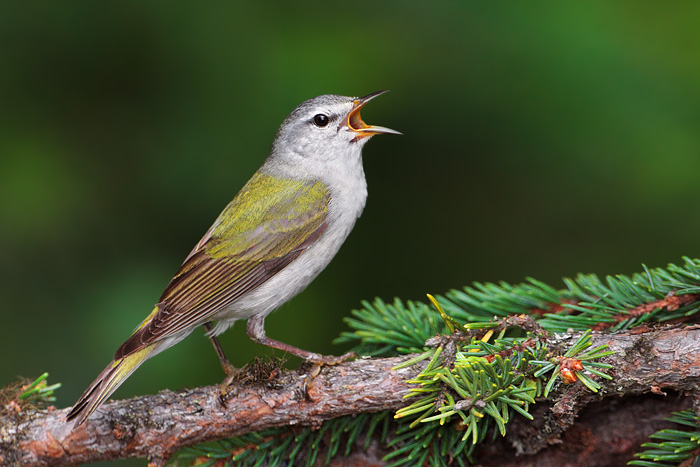
I didn't find a single Tennessee Warbler till I got to Lac Saint-Jean, but from there north they were ubiquitous, singing vigorously all day long from remarkably close-packed territories.
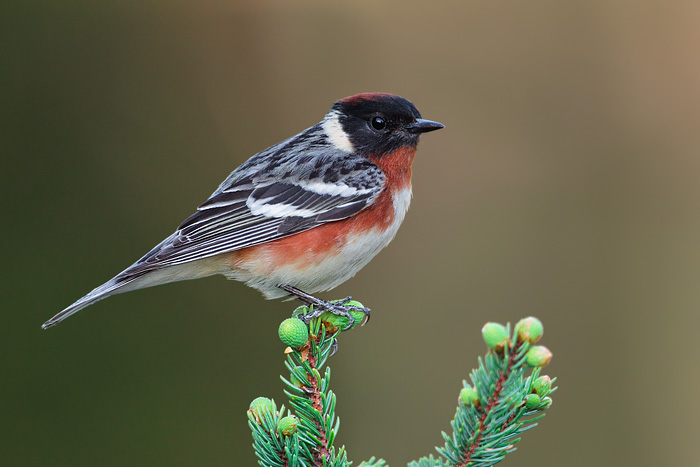
A personal favorite of mine, Bay-breasted Warbler was my most-wanted species on this trip. I was overjoyed to get several opportunities to photograph this warbler at eye level in their favored spruce-fir habitat. I never once found this species on my Quebec trip in anything other than mixed spruce and fir. The more extensive tracts of pure spruce seemed devoid of Bay-breasteds, instead hosting the closely related Blackpoll Warbler.
On my way south I stopped in the Laurentians again, where I enjoyed finding some photogenic species like Cedar Waxwing, before continuing on across the border. I was hoping for more chances at White-winged Crossbill in the Laurentians, but came up empty this time around. The crossbills in that area were concentrated in enormous flocks of hundreds or more, so it tended to be feast or famine with them. Finding a flock could yield many photographable birds, but it was also possible to spend an entire day in good habitat without finding any crossbills at all.
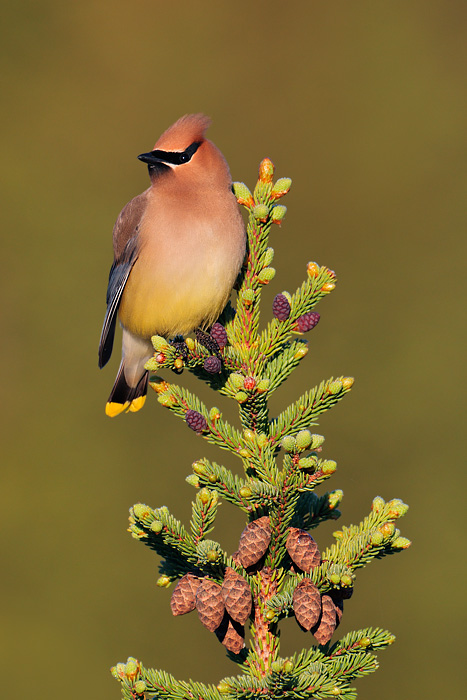
I was lucky to find this Cedar Waxwing just minutes after sunrise on a beautiful sunny morning. I usually prefer soft cloudy skies for songbirds, but for waxwings, direct sun is helpful to bring out the fine detail of their creamy smooth plumage.
Rather than heading all the way back home, I decided to spend a day looking for Bicknell's Thrush in the Catskill Mountains, hoping to improve on the single photo I'd taken in the Adirondacks. Bicknell's Thrush, first discovered on Slide Mountain in 1881, was considered a subspecies of Gray-cheeked Thrush until it was elevated to full species status by the AOU in 1998. It is the rarest thrush in North America and the most restricted in range, breeding only in the high mountains of the northeastern United States and southeastern Canada. It was also the only North American thrush species I hadn't seen or photographed before this trip. And so I found myself hiking up Slide Mountain by flashlight before dawn, rising from the deciduous forests of the base and emerging above the clouds in alpine spruce forest shortly before sunrise. After photographing the sun peeking up over the distant mountains, I set to work searching for Bicknell's Thrushes, and was delighted to find that the spruce forests were thick with them. Despite the global rarity of this species, they are locally numerous in good habitat. Photographing this rare bird in the beautiful, lush, moss-covered forests of the high Catskills was a great way to end the trip.
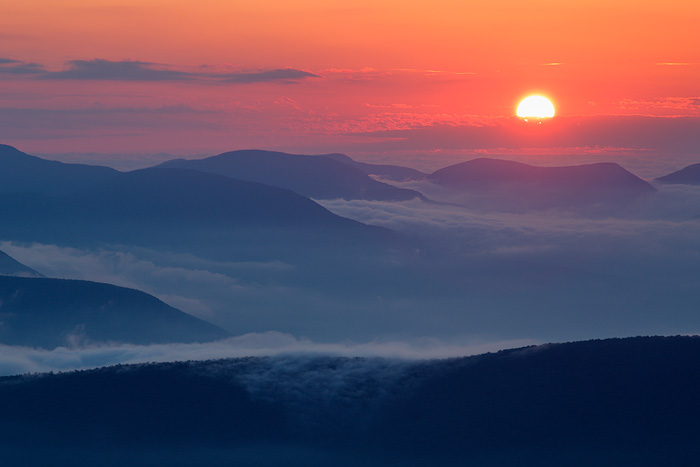
This sunrise, viewed from the top of Slide Mountain, was a great reward for rising early to make the hike up by flashlight.
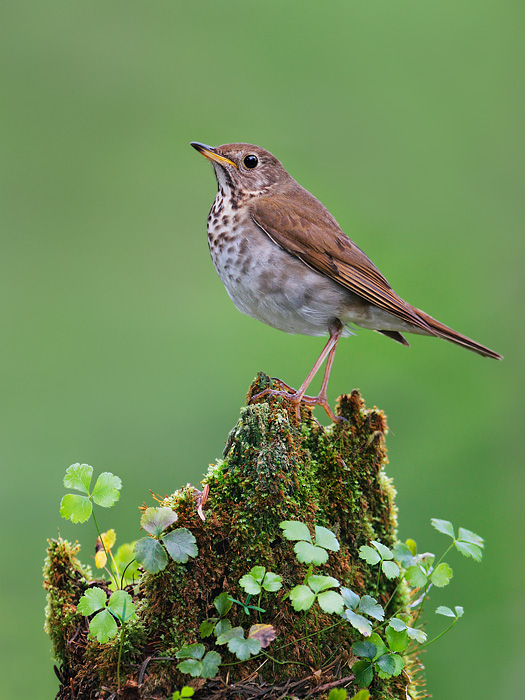
The rarest and most localized North American Thrush, Bicknell's Thrush is typically found foraging on the mossy floor of the spruce forests that cloak the high peaks of New York, New England, Quebec, New Brunswick, and Nova Scotia.
And that's it for my 2012 breeding season photos. My time in the boreal forest was the perfect complement to my April and May weekends spent in the temperate forests. Together, it was a great three months of travel through some of the most beautiful and birdiest forests of eastern North America. Now that the photography is done and the photos are all processed and posted, I'm spending a bit of time exploring some of my non-avian photographic interests, including fall color and waterfalls in West Virginia. Those photos and others will be coming along later this year.
August 23, 2012 - Eastern Temperate Forests
Mid-summer is a slow period for bird photography in my area, so aside from a few shorebird sessions, I've mostly been working on catching up on image processing the past few weeks. I've now finished the first half of my 2012 breeding season photos, which include photos from Maryland, Virginia, West Virginia, and Ohio. Like last year, I spent most of my time in the field this spring working on warblers. These exuberant and colorful little gems are impossible not to love. They are diverse as well, with 27 species breeding in the area, including wide-ranging species like the Prairie Warbler, as well as typically boreal species like the Nashville Warbler that are restricted in these parts to a few high altitude bogs in the Allegheny Mountains.
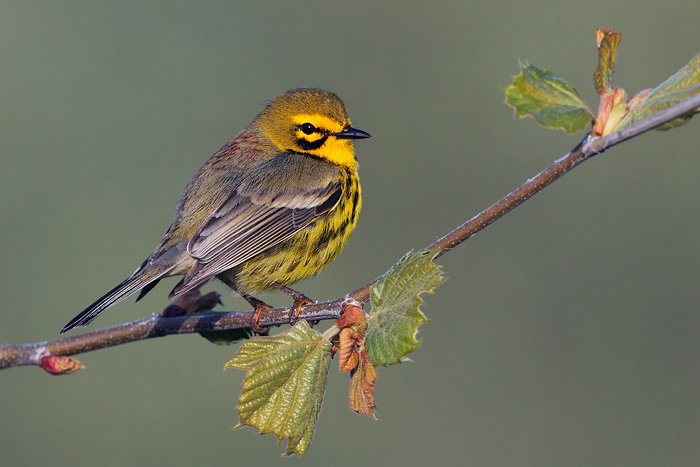
Like so many of our warblers, the Prairie Warbler has a misleading name. They are typically found in shrublands, early successional forests, and forest edges.
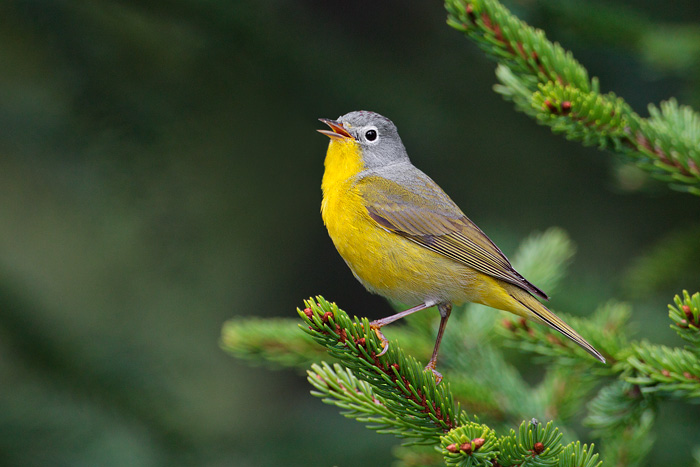
Only a handful of Nashville Warblers breed as far south as West Virginia, but they can be reliably found in some of the high elevation spruce bogs of the Canaan Valley.
One of my main target species this spring was the Golden-winged Warbler, a species that had eluded me the previous spring. The Golden-winged Warbler was formerly common in parts of West Virginia, but is now in serious decline due to habitat loss and competition with the closely related, but more aggressive, Blue-winged Warbler. Historically, Blue-winged Warblers lived farther south or at lower elevations than the Golden-winged Warbler populations in West Virginia, but a warming climate has increasingly brought the species into competition in recent years. I had heard that Golden-winged Warblers remain safe from their Blue-winged competitors in the high elevation pastures of the Allegheny Mountains, but the first Golden-winged Warbler I found this spring was being chased relentlessly by a Blue-winged Warbler at 3,000 feet elevation, so I'm not sure that any safe havens remain for them in this area. Sadly, Golden-winged Warblers are expected to be extirpated from much of the Appalachians in the coming years.
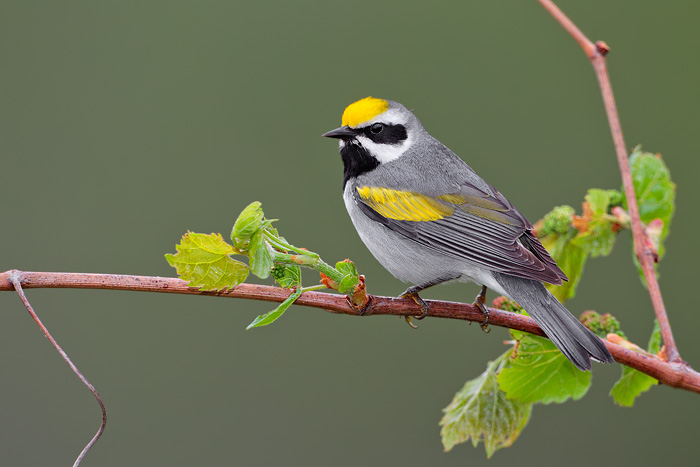
Along with the Blue-winged Warbler, the Golden-winged Warbler is one of only two species in the genus Vermivora (a third, Bachman's Warbler, is probably extinct). Golden-winged Warbler populations are in severe decline throughout much of their range.
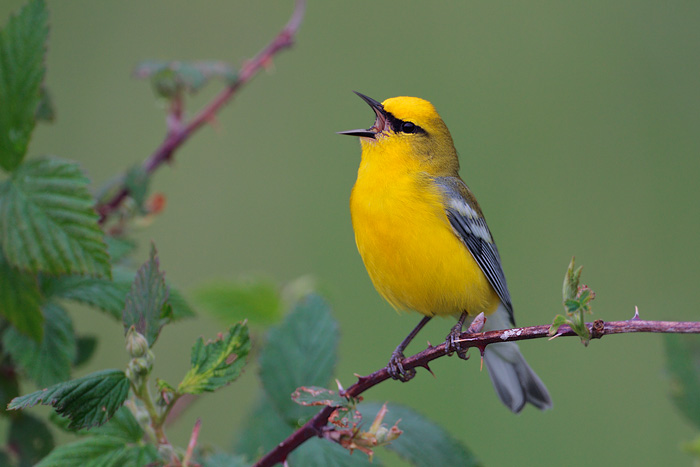
A close relative of Golden-winged Warblers, the Blue-winged Warbler will hybridize with Golden-winged Warblers where their ranges overlap. In addition to genetic dilution through hybridization, male Blue-winged Warblers drive male Golden-wingeds out of the best breeding territories, contributing to a sharp decline in Golden-winged Warbler populations in West Virginia and the surrounding states.
While warblers were my main focus this spring, I spent some time in early summer working on flycatchers such as the Eastern Wood-Pewee in the Shenandoah Valley. Now that I have photos of all the local warbler species, I'm hoping to have more time to spend on flycatchers, vireos, and some of the other less-conspicuous songbirds next spring.
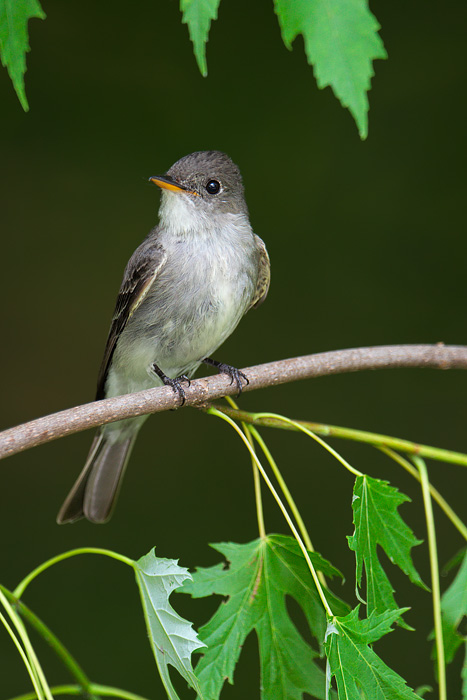
The Eastern Wood-Pewee, with its distinctive "pee-ah-wee" song, is one of the most readily-detectable species in the eastern temperate forests. They sing frequently at all times of day through the spring and summer months.
July 25, 2012 - Mid-Atlantic
I devoted most of my photography during the winter of 2011-2012 to trips to Texas and Florida, but in between these bigger trips I squeezed in some photography in the mid-Atlantic region, including a few visits to the Delmarva Peninsula, coastal New Jersey, and a few sites along the Potomac River. Along with photographing the usual coastal waterfowl like Harlequin Ducks and Canvasbacks, I also made a point of trying to photograph several species that had previously eluded me, including Clapper and Virginia Rail.
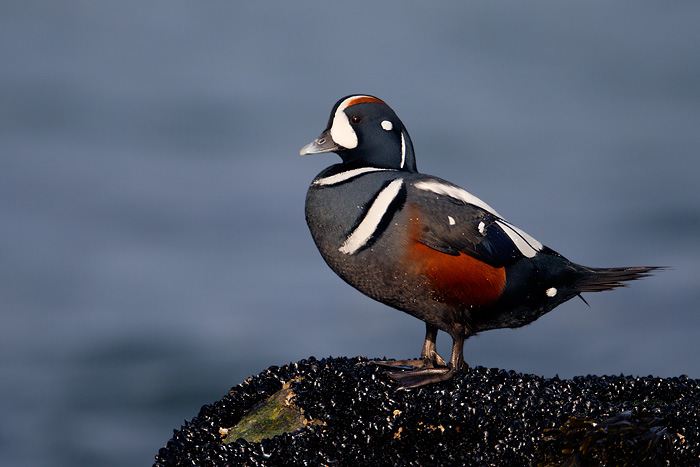
Harlequin Ducks inhabit rocky coastline, and when not foraging, can often be found perched on rocks just above the surf.
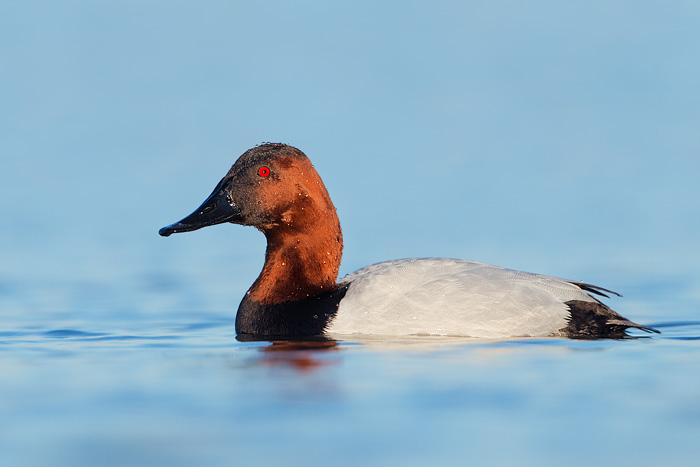
Thousands of Canvasbacks winter on the Chesapeake Bay and its tributaries. This drake was part of a raft of several hundred Canvasbacks on the Choptank River.
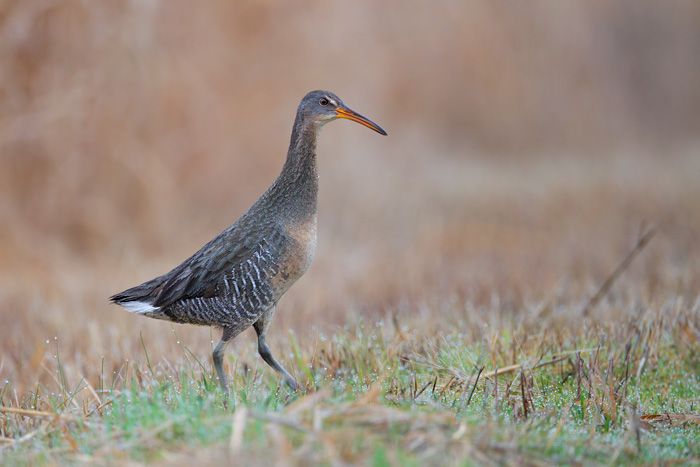
Clapper Rails are common residents in the saltmarshes of the Delmarva Peninsula. They can be distinguished from the closely related King Rail by their overall duller plumage, as well as habitat (King Rail prefers freshwater marshes) and voice.
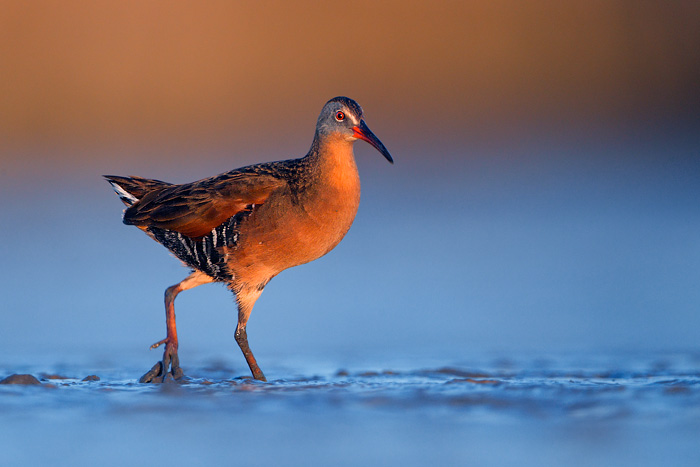
I lay down in the mud to get a low-angle photo of this beautiful Virginia Rail in the last rays of sunlight. I love photographing birds at their own eye level, though it can be dirty business!
I also went on a pelagic trip out of Ocean City, Maryland on a very foggy March day. It was a good day for birding, with a Maryland record high count of Manx Shearwaters, but none of the shearwaters came close enough for a quality photo. However, a number of Northern Gannets put on a show close by, giving me opportunities to photograph birds in various plumages.
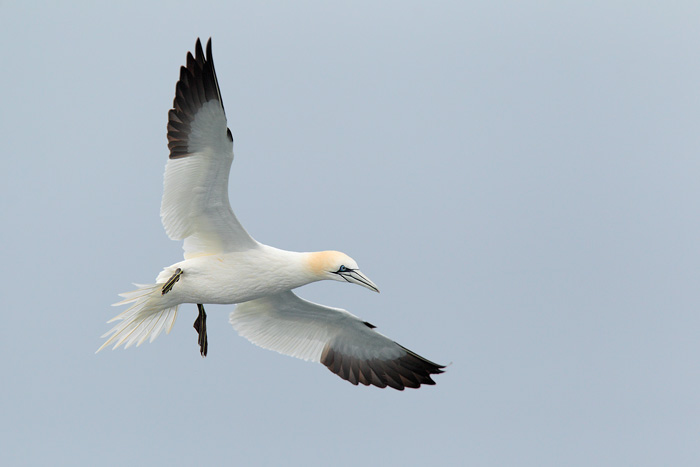
Northern Gannets hunt for fish in spectacular plunge dives from high above the water. This Gannet is maneuvering in preparation for a dive.
It's been almost a month now since I touched a camera, with most of my time recently going to photo processing, but I'm hoping to make it out for fall shorebirds in the near future if the weather forecast is good. I still have a lot of processing to do, though, with all my spring photos untouched as of yet.
July 14, 2012 - Florida
I took two trips to Florida in March, with the first trip mostly spent on the southwest coast, and the second trip in the central part of the state. The long coastline of Florida hosts abundant shorebirds and waders during the winter, and the pleasant temperatures and unwary subjects make it a popular destination for bird photographers.
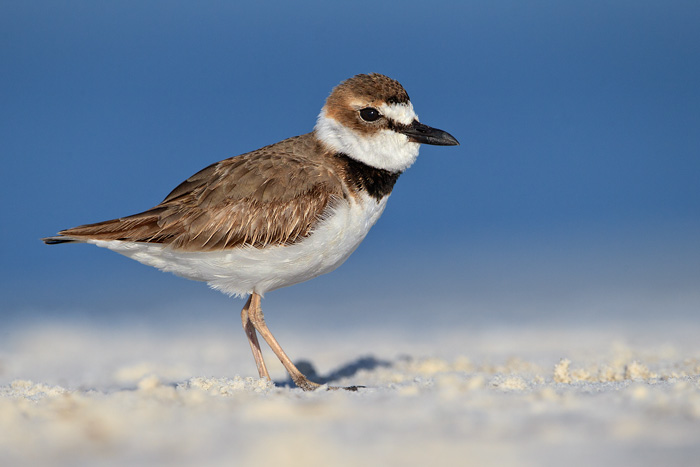
Wilson's Plovers are frequently encountered on the beaches of Florida.
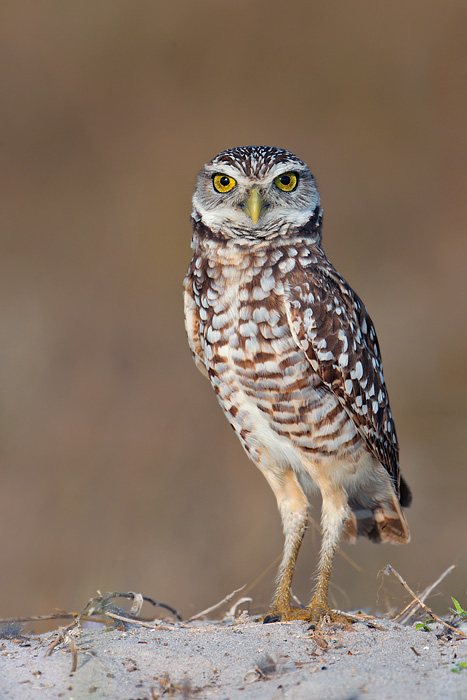
Burrowing Owls range across the American west, but also have a disjunct population in Florida. Unlike the western populations of Burrowing Owls, which typically inhabit abandoned prairie dog tunnels, Burrowing Owls in Florida usually dig their own nest tunnels. This behavior is enabled by the soft and sandy soil, which was sea floor prior to Florida's emergence from the ocean around 2.5 million years ago.
The prime bird photography locations in southwest Florida tend to be crowded with beachgoers, which is helpful for bird photography, because the birds are so accustomed to beachgoers that they have lost nearly all fear of humans. Some of these birds are so unwary that it's possible to walk up within a few feet of them and photograph with a wide angle lens.
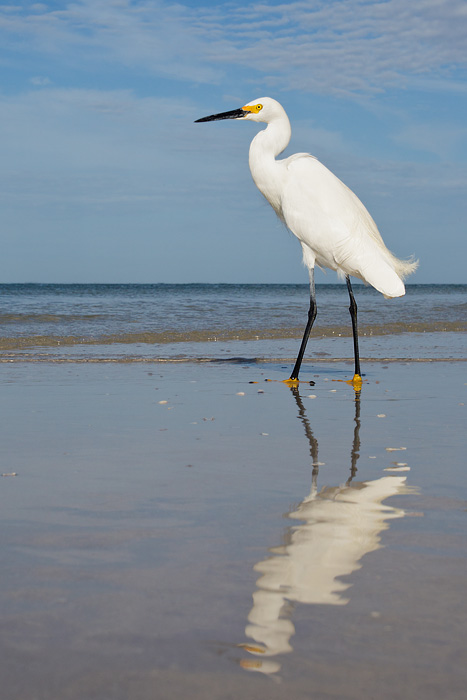
Much though I love wide-angle wildlife photography, I rarely practice it. The challenges of a close approach mean that this type of photography is generally much less productive than the more conventional telephoto lens method, and much more invasive and disruptive for the subject. The situation is different in Florida, though, where unwary birds such as this Snowy Egret will allow a photographer to obtain frame-filling shots with a short lens.
In contrast, Central Florida has a totally different feel, with extensive wetlands, forests, and prairies that are lightly visited by humans. Central Florida holds many of the same waders and waterfowl as can be found on the coast, but also features inland species such as Bachman's Sparrow and Eastern Meadowlark.
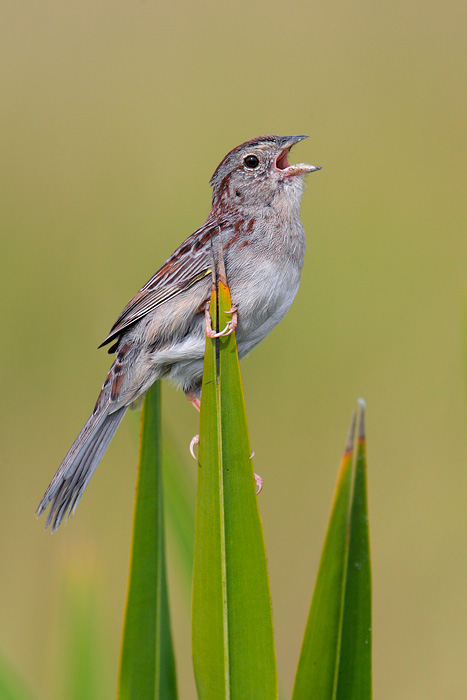
Bachman's Sparrows are typically found in open pine forests, but in central Florida they also inhabit palmetto prairies.
Now that my Florida photos are posted, I'm working on photos from the coastal mid-Atlantic region last winter, as well as photos from the eastern temperate and boreal forests in the spring.
February 21, 2012 - Texas
Photos from a week spent in the Rio Grande Valley of Texas are now online. I didn't cover too much ground on this trip - venturing only as far west as Salineño and as far east as Estero Llano Grande - but this little patch of Texas boasts a remarkable number of the Mexican specialties that draw so many birders to The Valley each winter.
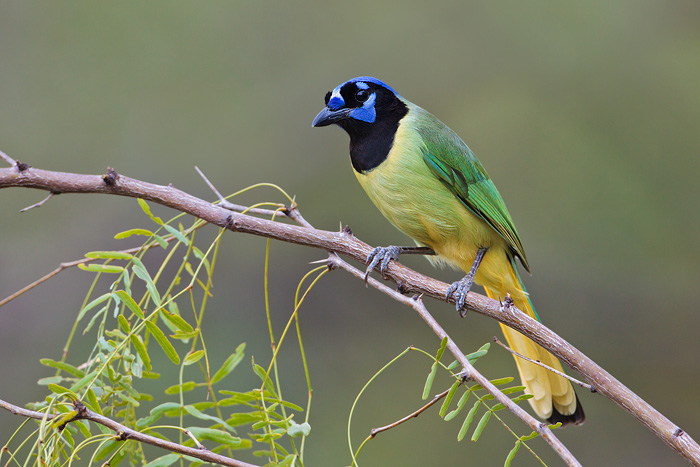
The Green Jay is the most common corvid in the Lower Rio Grande Valley, often found moving through thorn scrub and subtropical forest in noisy flocks.
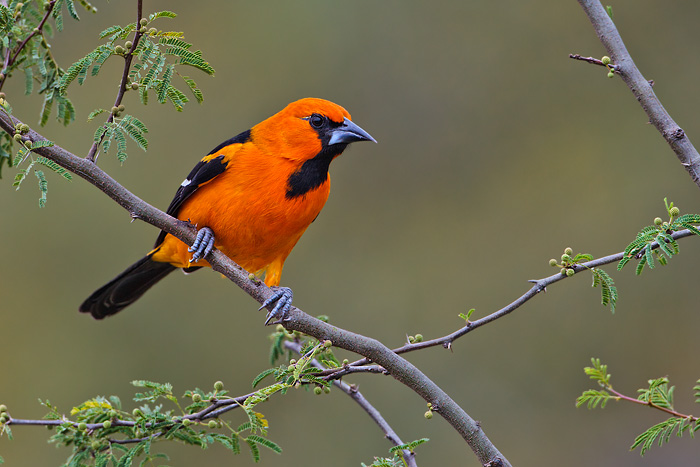
An Altamira Oriole in Hidalgo County, Texas. The U.S. range of the Altamira Oriole is limited to South Texas.
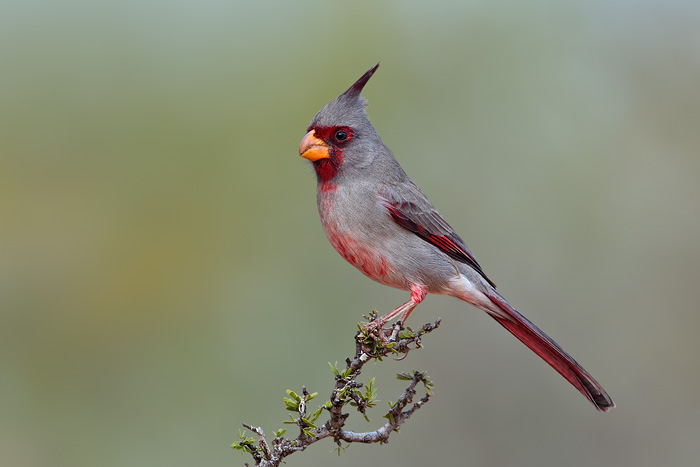
The Pyrrhuloxia, also known as the Desert Cardinal, is common in the more arid regions of South Texas. This individual is perched on a Guayacan branch (Guajacum angustifolium).
Birding South Texas isn't all about the specialties, though - The Valley is a great place to see and photograph species like the Northern Cardinal, which, though widespread in North America, is particularly abundant in the Tamaulipan thorn scrub that covers much of South Texas.
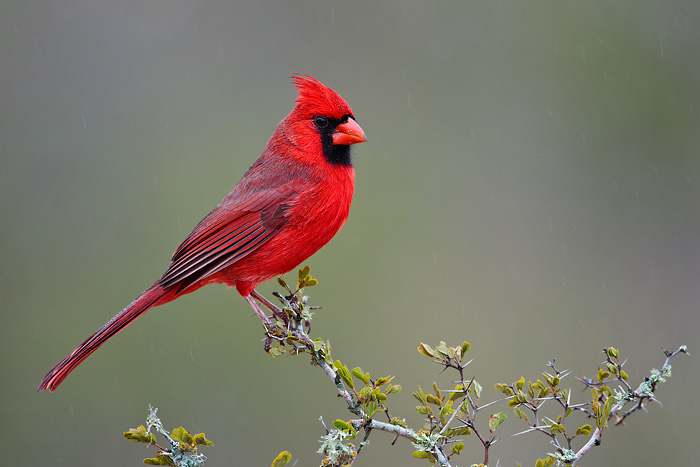
Despite their popular association with snowflakes and holly on holiday greeting cards, Northern Cardinals are more at home in the thorn scrub of South Texas. Their northward expansion in recent decades has been enabled by the increasing prevalence of bird feeders.
Now that Texas is behind me, I'm looking forward to heading south again next month, this time to Florida, where I hope to see more sunshine, and fewer raindrops, than I did on my last Florida trip.
January 27, 2012 - New Site Design
Welcome to Tringa 2.0. In addition to numerous aesthetic improvements, the new design should be faster and easier to navigate, and will be easier for me to maintain. I'll continue to tweak the style and streamline the code, but the basic structure is in place now.
I took a trip to South Texas earlier this month, where I had a fantastic week photographing most of the lower valley specialties. Now that the new site design is done, it's time to get back to image processing!